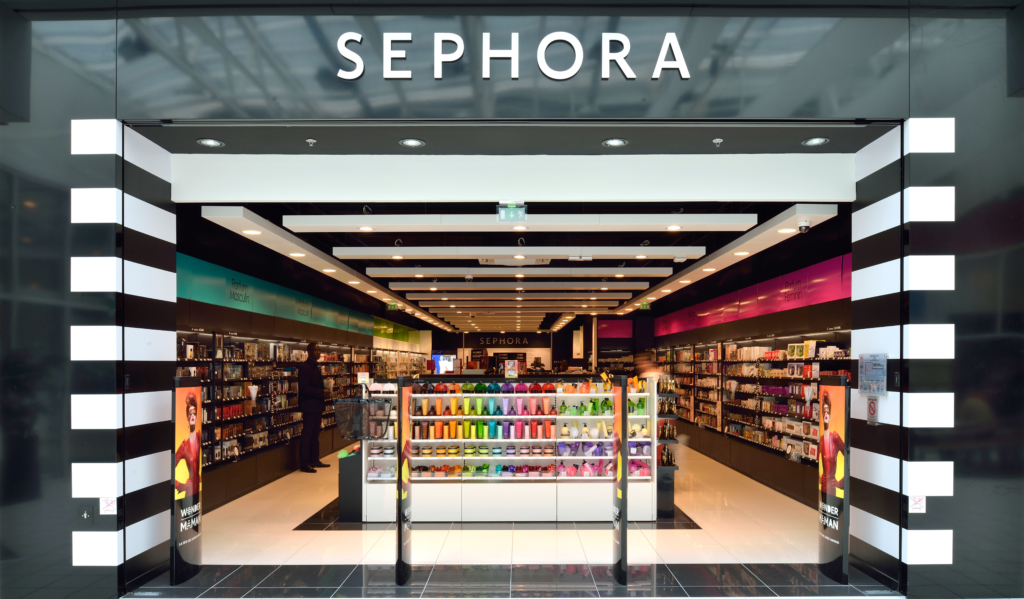The National Retail Federation expects 2017 holiday retail sales[1] to total $678 billion, an increase of about 3.6 percent from last year. According to Deloitte, consumers are expected to spend 42% of their holiday budgets in brick and mortar stores. In order to maximize profits, stores employ usability principles to manipulate customers into purchasing more merchandise. Specifically, many take advantage of physical constraints to influence shoppers.
Decompression Zone
According to Paco Underhill’s book Why We Buy, when shoppers enter stores, they walk quickly and don’t immediately stop as soon as they open the store doors. Instead, the momentum from hurriedly walking through parking lots carries over within the stores and shoppers usually miss the merchandise at the front. Underhill states that whatever is in the zone they cross before making that transition is pretty much lost on shoppers (p 43) so they won’t pay attention to merchandise, signs, or staff asking if they can help. In order increase conversion rates and optimize the shopping experience for customers, stores often turn the space into a decompression zone—a landing strip that physically constrains customers and forces them to slow down.
Some stores create a decompression zone by adding a “power display” or a large horizontal rack of merchandise that makes customers slow down and mentally transition into being at the store (Figure 1). Other retailers take the decompression zone to the outside of the store in order to entice customers to slow down before entering, by adding merchandise such as flower or plant displays outside super markets. Others completely break the rules and place large amounts of discounted merchandise at the front of the store in baskets in order to manipulate customers into decelerating. Although decompression zones might look differently depending on the type of store and how much space they can afford to utilize, one common factor they exhibit is physically constraining customers and forcing them to slow down in order to help them transition into a shopping mindset.

Shopping Basket Strategy
Another strategy retail stores employ to entice customers to buy merchandise is removing constraints that limit the number of things shoppers can physically hold in their hands while going shopping. For example, customers during the holidays lug coats while shopping and women often carry handbags. Because the amount of merchandise a shopper can physically hold impacts how much a customer purchases, stores provide shopping carts, baskets and bags for customers to carry merchandise. Although most stores usually place baskets and bags near the entrance, as we discussed earlier, shoppers might overlook anything in the decompression zone simply because they don’t notice the baskets.
In order to combat the overlooking of shopping bags and baskets, Underhill suggests strategically placing baskets around stores or having sales staff hand them out once customers have had a second to decompress. According to Underhill, shoppers almost unanimously accept baskets (p 54) and as baskets in one of his consulting projects started being handed out in stores by employees, sales rose steadily. Removing this constraint is also the reason why staff at clothing stores ask customers if they want a dressing room started for them. By taking the clothes off their hands, shoppers can comfortably browse the store, grab more clothes from the racks and spend more cash.

Overall, Paco Underhill’s book Why We Buy explains how retailers merge consumer behavior theory and usability concepts like constraints to influence shoppers’ experiences in stores. By making small changes, such as adding a rack of clothing that physically stops shoppers or incentivizing staff to hand out shopping bags while customers browse the floor, stores can create better experiences for shoppers and maximize sales at the same time.
[1] Excluding automobiles, gasoline and restaurants
Sources
https://nrf.com/resources/consumer-research-and-data/holiday-spending/holiday-headquarters
